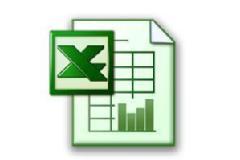Microsoft Excel provides a grid interface to organize nearly any type of information. The power of Excel lies in its flexibility to define the layout and structure of the information you want to manage. Basic tasks require no special training, and Excel allows you to work with text, numbers, and date information in a relatively open and unstructured way. Nearly 30 years after its initial introduction, Excel remains the worlds leading spreadsheet software.
This brief article provides an introduction to Microsoft Excel, major uses, and key features every Excel user should be aware of.
Major Uses for Excel
Excel is used widely in any financially-related activity. The ability to create new spreadsheets where users can define custom formulas to calculate anything from a simple quarterly forecast to a full corporate annual report makes Excel highly appealing. Excel is also used widely for common information organization and tracking like a list of sales leads, project status reports, contact lists, and invoicing. Finally, Excel is a useful tool for scientific and statistical analysis with large data sets. Excel's statistical formulas and graphing can help researches perform variance analysis, chi-square testing, and chart complex data.















